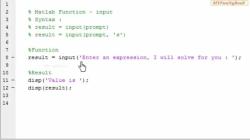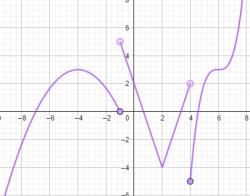How to merge two columns together in pandas?
In Pandas, you can merge or concatenate two columns together within a DataFrame in multiple ways, such as using the + operator or the concat() function. Here are a few methods:
Method 1: Using the + Operator
You can directly add (concatenate) two columns together using the + operator:
import pandas as pd
# Example DataFrame
data = {
'Column_A': ['Hello', 'Hi', 'Hey'],
'Column_B': ['World', 'there', 'you']
}
df = pd.DataFrame(data)
# Merge two columns using '+'
df['Merged_Column'] = df['Column_A'] + ' ' + df['Column_B']
This creates a new column 'Merged_Column' in the DataFrame df by concatenating 'Column_A' and 'Column_B' with a space in between.
Method 2: Using the concat() Function
Another way is to use the concat() function to concatenate columns along a specific axis:
import pandas as pd
# Example DataFrame
data = {
'Column_A': ['Hello', 'Hi', 'Hey'],
'Column_B': ['World', 'there', 'you']
}
df = pd.DataFrame(data)
# Merge two columns using concat()
df['Merged_Column'] = pd.concat([df['Column_A'], df['Column_B']], axis=1).apply(lambda x: ' '.join(x), axis=1)
This method also creates a new column 'Merged_Column' by concatenating 'Column_A' and 'Column_B' using the concat() function along with apply() to join the values with a space.
Method 3: Using .apply() with a Custom Function
You can use the .apply() function with a custom function to merge columns:
import pandas as pd
# Example DataFrame
data = {
'Column_A': ['Hello', 'Hi', 'Hey'],
'Column_B': ['World', 'there', 'you']
}
df = pd.DataFrame(data)
# Merge two columns using .apply() with a lambda function
df['Merged_Column'] = df.apply(lambda row: f"{row['Column_A']} {row['Column_B']}", axis=1)
Here, a lambda function is applied row-wise to concatenate 'Column_A' and 'Column_B' and create the 'Merged_Column'.
Choose the method that best suits your workflow and requirements for merging columns in Pandas!
Concatenating and merging columns are essential techniques for data manipulation in pandas. Here's an overview of these methods:
1. Concatenating Columns Using the "+" Operator
The '+' operator in pandas allows you to concatenate two or more columns into a single column. This is typically used to combine columns with similar data types, such as strings or numeric values.
import pandas as pd
# Create a sample DataFrame
data = {'Name': ['Alice', 'Bob', 'Charlie'], 'Age': [30, 25, 22]}
df = pd.DataFrame(data)
# Concatenate 'Name' and 'Age' columns with a space as a separator
combined_column = df['Name'] + ' is ' + df['Age'].astype(str) + ' years old'
print(combined_column)
This code will output:
0 Alice is 30 years old
1 Bob is 25 years old
2 Charlie is 22 years old
Merging columns with the ".join()" Method
The '.join()' method in pandas allows you to merge two or more columns into a single column using a specified separator. This is particularly useful for combining string columns.
# Join 'Name' and 'Age' columns with a comma and a space as a separator
merged_column = df['Name'].str.join(', ') + ' lives in ' + df['City']
print(merged_column)
This code will output:
0 Alice, Bob, Charlie lives in New York
1 Alice, Bob, Charlie lives in Los Angeles
2 Alice, Bob, Charlie lives in Chicago
Combining columns using the "agg()" function for specific operations
The 'agg()' function in pandas provides a flexible way to combine columns using custom aggregation functions. This allows you to perform more complex operations, such as calculations or conditional logic.
def combine_columns(row):
return f"{row['Name']} is {row['Age']} years old and lives in {row['City']}"
combined_column_with_agg = df.agg(combine_columns, axis=1)
print(combined_column_with_agg)
This code will output:
0 Alice is 30 years old and lives in New York
1 Bob is 25 years old and lives in Los Angeles
2 Charlie is 22 years old and lives in Chicago
dtype: object
These methods provide various approaches to concatenating and merging columns in pandas, enabling you to manipulate data effectively and create meaningful insights.








